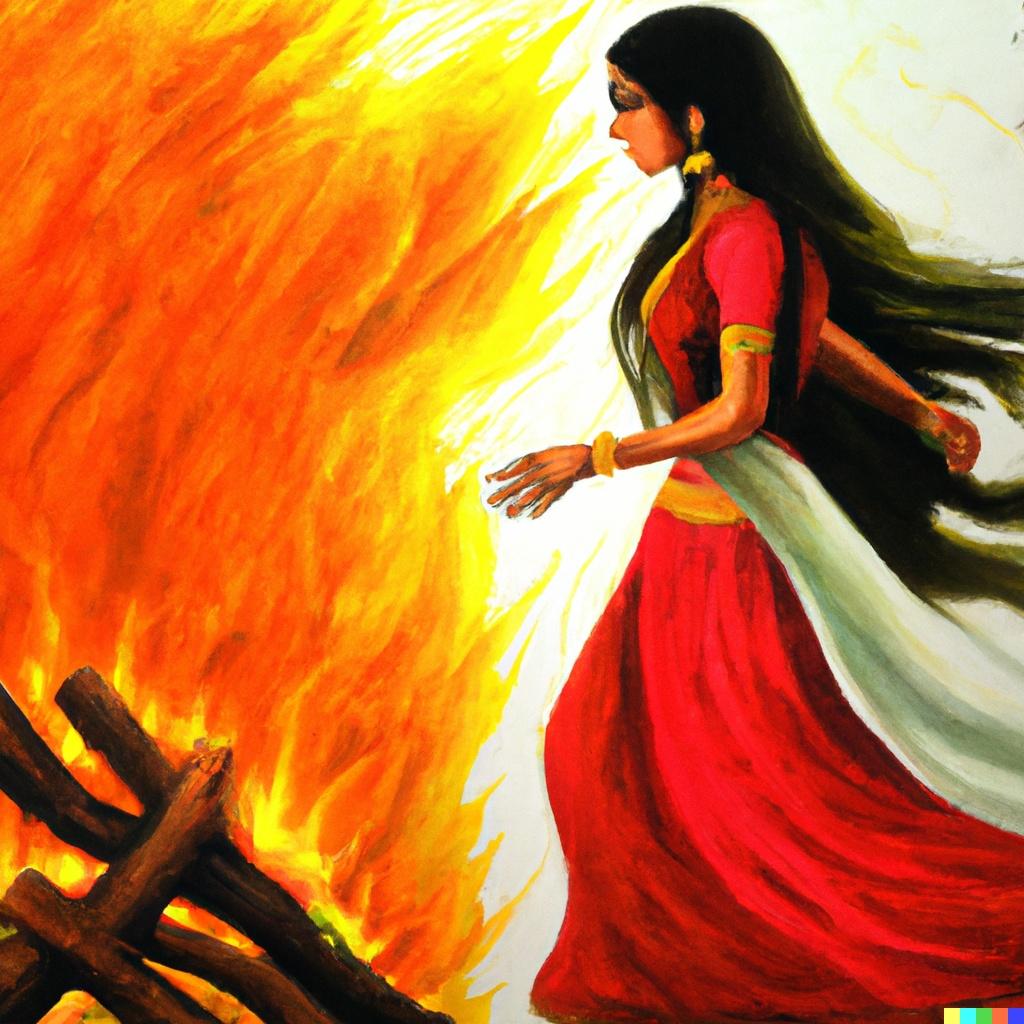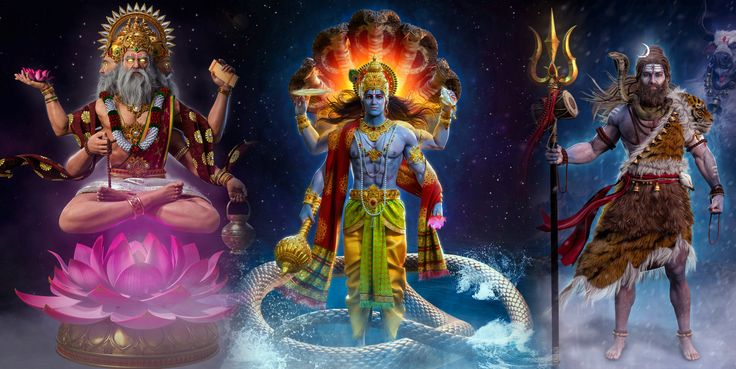The sacred shrine of Vaishno Devi, nestled in the Trikuta Mountains in Jammu and Kashmir, is one of the most revered pilgrimage destinations for Hindus across the globe. Millions of devotees flock to this holy site every year, driven by their unwavering faith in the Goddess Vaishno Devi, believed to fulfill their wishes and grant divine blessings. But who exactly is Vaishno Devi, and what is the story behind her sacred abode? Let’s dive into the captivating mythological narrative of Vaishno Devi.
The Birth of Vaishno Devi
The legend of Vaishno Devi begins with the collective will of the Hindu deities Brahma, Vishnu, and Shiva, who sought a divine force to rid the world of the increasing evil forces and demons plaguing the Earth. Together, they invoked the supreme energy of the three goddesses—Lakshmi, Parvati, and Saraswati—to create a unified force in the form of a girl, Vaishno Devi.
Born to a devout couple in South India, she was named Trikuta. From a very young age, Trikuta displayed intense devotion toward Lord Vishnu and performed deep meditation, seeking his blessings. Impressed by her piety, Lord Vishnu blessed her, and she later took a vow to remain celibate throughout her life.

Vaishno Devi’s Journey Northward
As Trikuta grew, her devotion to Lord Vishnu intensified, and she desired to merge her spiritual energy with his. During the Treta Yuga (the age when Lord Rama lived), she sought out Lord Rama, an incarnation of Vishnu. According to the legend, when she encountered Lord Rama, she asked him to marry her. However, Rama, bound by his vow of marriage to Sita, gently declined but assured her that in his next incarnation as Kalki (the final avatar of Vishnu), he would accept her as his consort.
Instructed by Lord Rama to meditate and perform penance in the Trikuta Mountains, she moved to the northern regions of India. It is in these mountains where Vaishno Devi chose to reside, continuing her spiritual journey while helping those who sought her blessings. She immersed herself in meditation and became a powerful goddess, helping the poor and downtrodden.
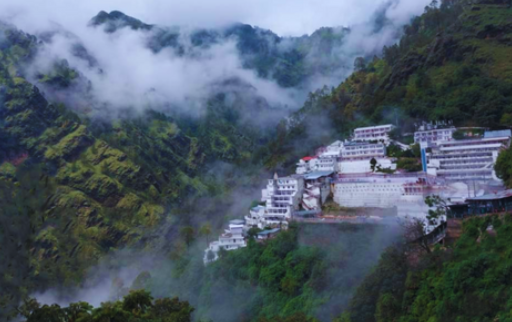
Vaishno Devi and Bhairon Nath
One of the key episodes in the Vaishno Devi legend involves the demon Bhairon Nath, a powerful ascetic who desired Vaishno Devi upon hearing of her beauty and strength. Unaware of her divine origin, Bhairon Nath relentlessly pursued her with the intent of forcing her into marriage. To escape his advances, Vaishno Devi fled into the mountains, leading to an intense chase that covered many regions.
During the chase, Vaishno Devi paused at various locations, leaving behind divine imprints of her presence. One of the significant stops was at a place called Banganga, where she shot an arrow into the ground to produce a spring of fresh water to quench her thirst. She also took refuge in a cave at Ardhkuwari, meditating there for nine months, much like an unborn child in a womb. This cave is now called Garbh Joon, and it is believed that pilgrims who pass through it are cleansed of their sins.
Eventually, Vaishno Devi reached the holy cave in the Trikuta Mountains. However, Bhairon Nath followed her there as well. In response, Vaishno Devi assumed her fierce form as Goddess Mahakali and beheaded Bhairon Nath outside the entrance of the cave. His severed head fell several kilometers away at a place now known as Bhairon Ghati. According to legend, after his death, Bhairon Nath realized his mistake and sought forgiveness. The compassionate goddess not only forgave him but also blessed him, decreeing that every devotee visiting her shrine must also visit the Bhairon Temple to complete their pilgrimage.
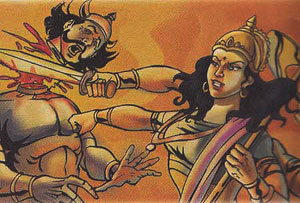
The Holy Cave and Pilgrimage
The cave in which Vaishno Devi resides is where her three pindis (rock formations) are worshipped. These three pindis represent the three primary forms of the goddess: Mahakali (goddess of destruction), Mahalakshmi (goddess of wealth), and Mahasaraswati (goddess of knowledge). Together, they symbolize the powerful trinity of the feminine divine.
The pilgrimage to Vaishno Devi is considered one of the holiest journeys for a devotee, filled with blessings and spiritual experiences. The path to the shrine begins at the base town of Katra, from where pilgrims undertake a 12 to 14 km trek to the cave. The journey is not just a physical one but a spiritual ascent, filled with the chanting of “Jai Mata Di” (Victory to the Mother Goddess) and the deep belief that Vaishno Devi will answer the prayers of those who seek her with sincerity and devotion.
In recent years, facilities like helicopter services, battery-operated vehicles, and ponies have made the trek easier for those unable to walk. However, the faith and spirit of the pilgrimage remain undeterred.
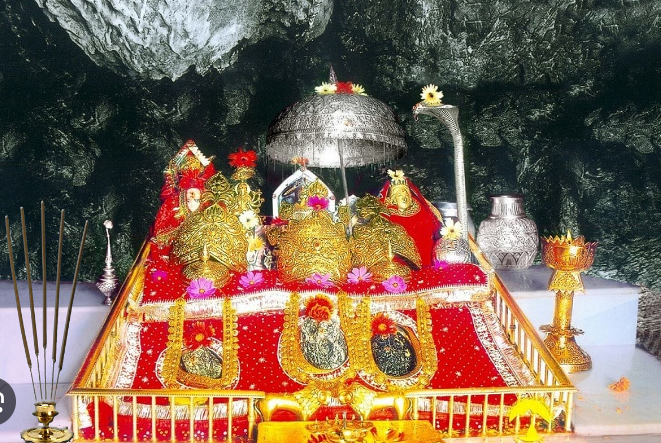
The Significance of Vaishno Devi
Vaishno Devi is not just a goddess of wish fulfillment, but a symbol of perseverance, strength, and compassion. Her story emphasizes the triumph of good over evil, the importance of spiritual discipline, and the deep-rooted belief in divine justice.
Visiting the Vaishno Devi shrine is believed to bring peace, prosperity, and protection to the devotees. The shrine is also a symbol of the goddess’s omnipresence, as devotees feel her spiritual presence throughout the pilgrimage. The journey itself is seen as a form of devotion, with every step taken toward the cave believed to cleanse the soul.
The story of Vaishno Devi is a testament to the power of faith, devotion, and divine intervention. The goddess, in her many forms, continues to inspire and protect those who seek her blessings. The pilgrimage to her shrine remains a powerful spiritual journey, where millions of devotees experience divine energy, reaffirming their belief in the goddess’s ability to transform lives.


